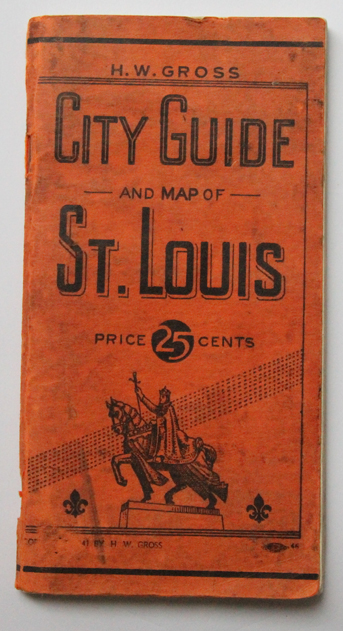
Documents
The “documents” layer on each of the map pages provides links to representative archival sources, such as zoning maps, urban renewal plans, and legal documents. Links to these documents are also provided below, along with notes on historical context, and full bibliographic citations.
Race and Property
Documents from the 1916 racial zoning episode include a United Welfare Association Postcard (1915), illustrating “an entire block ruined by negro invasion”; an “Initiative Petition for Control of Mixed Blocks Occupied by White and Colored People” (1915) echoing the logic and language of the resulting ordinance--which set aside neighborhoods that were 75 percent white or 75 percent black for exclusive residency by those races; and a “Dear Neighbor” letter (February 1915), the latter paragraphs of which anticipate the racial upheaval of urban renewal, warning of the displacement of black residents from the site of the Jefferson Memorial. These are all reproduced from Box 1, Race Relations Collection, box 1, Missouri Historical Society.
"Distribution of the Negro Population” (1930). This 1930 map, by the City Plan Commission, shows both the distribution of the black population and the boundaries of the St. Louis Real Estate Exchange’s 1923 “unrestricted” zones. Filed with City Plan Maps, Missouri Historical Society.
Examples of restrictive deed covenants include Newstead Restrictive Covenant (April 1924), book 5896, 574-76, St. Louis Recorder of Deeds; St. Louis Real Estate Exchange Restrictive Agreement, reprinted in Dolan and Wehmeyer v. Richardson et al, Abstract of the Record Before the St. Louis Court of Appeals (1944), Plaintiff’s Exhibit A; and the original Dolan covenant at book 3841,386, St. Louis Recorder of Deeds. The map also links to the full text of Dolan v. Richardson (1944), an important precursor to the more-famous Shelly v. Kraemer (1947) case.
The Fox Meadows promotional pamphlet (1937?) illustrates the widespread use of restrictive covenants in new and unincorporated subdivisions. Box 2, Federer Realty Records, Missouri Historical Society.
Zoning
The documents here consist largely of representative zoning maps. The City of St. Louis Zoning Ordinance (1926) is reprinted from the case file of State Ex Rel. Oliver Cadillac v. Christopher (1927), 28010; RG 600, Supreme Court Case Files, Missouri State Archives. The plates from the 1947 City Plan illustrate the challenge of sorting out land use in older cities where development preceded zoning.
Zoning maps from St. Louis County show a range of approaches, from inner suburbs (where land use more closely resembled that of the city) to more exclusive outer suburbs; and from early ordinances to those drafted during the heyday of postwar suburbanization. Included here are maps for Webster Groves (1923), Richmond Heights (1941), Olivette (1956), Clayton (1958), Brentwood (1967), Frontenac (1968), Overland (1970), and Eureka (1978). These maps come from a variety of sources, including the Library of Congress, the St. Louis County Municipalities Collection in the Western Historical Manuscripts Collection at University of Missouri-St. Louis, and the bound city planning reports in the Harland Bartholomew and Associates Collection at Washington University. The Ballwin annexation map (courtesy of the Ballwin City Clerk) illustrates the patchwork incorporation of private subdivisions into zoned municipalities.
Urban Renewal
Postwar urban renewal was rooted in the desire to eradicate blight and clear central city slums. The scope of the problem is suggested by estimate of Obsolete and Blighted Districts in the 1947 City Plan, and satirized by the 1953 Daniel Fitzpatrick cartoon, reproduced from the Fitzpatrick/Maudlin Collection in the Western Historical Manuscript Collection. The early planning for urban renewal is captured in the 1954 letter from the Land Clearance Authority to Mayor Tucker, in City’s redevelopment plans for Kosciusko (1958) ; the first Busch Stadium (1960) and Mill Creek Valley (1958) and in the follow-up promotion pamphlet for the same site (these documents all from the Raymond Tucker Papers at Washington University).
One of the few urban renewal projects in the County was the clearance and redevelopment of Elmwood Park. The Elmwood Park Redevelopment Plan is reprinted from the case file of Brooks v. Land Clearance for Redevelopment (1966), RG 600, Supreme Court Case Files, Missouri State Archives.
The more recent pattern of urban renewal is suggested by Blighting Study (1995) for industrial redevelopment on North Broadway and the controversial Northside Regeneration Tax Increment Financing Redevelopment Plan (2009) for a large swath of North St. Louis.

